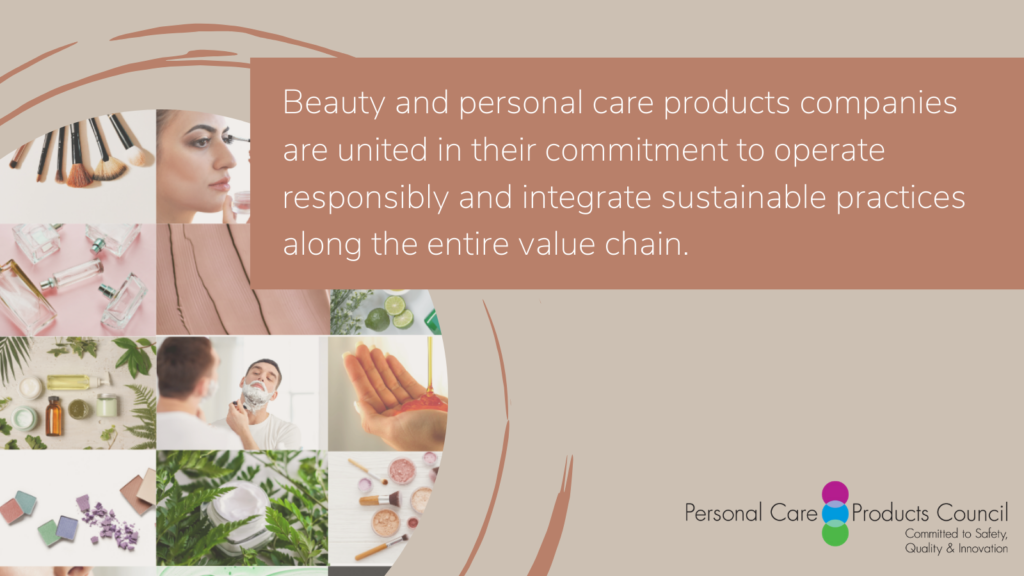Transparency and Compliance in the Supply Chain
Lisa Powers
EVP, Public Affairs & Communications, Personal Care Products Council
Today’s increasingly complex global supply chains present many challenges for companies who are under heightened stakeholder scrutiny—from consumers, investors and NGOs focused on their ability to operate ethically, build resilience and manage risk. Recently, COVID-19 has forced many companies, and entire industries, to rethink and transform their global supply chain models.
Over the past few decades, companies have taken advantage of global sourcing opportunities in order to compete more efficiently, whether through reduced production costs, proximity to market or the need for specialized skills, which have introduced new types of risk.
While some of these risks are direct, like supply chain disruptions or trade tariffs, others are less obvious—such as intellectual property theft and public relations crises—but equally threatening to businesses.
COVID-19 has placed manufacturers worldwide under increasing political and competitive pressures to increase domestic production; reduce dependence on sources that are perceived as risky; and build more agile, resilient and sustainable supply chains.
Members of the Personal Care Products Council (PCPC) are united in their commitment to operate responsibly and integrate sustainable practices along the entire value chain. As part of PCPC’s efforts to advance the capabilities, know-how and understanding of best practices, we recently launched a sustainability-focused webinar series for members, the most recent of which focused on transparency and compliance in the supply chain.
Webinar guest speaker Sandy Gray, supply chain sustainability solutions at EcoVadis, a CSR risk monitoring and sustainability rating platform, noted that beauty and cosmetics manufacturers must consider sustainability throughout the product lifecycle—from raw materials and manufacturing to packaging, distribution and retail—as more than two thirds of many beauty and personal care products’ environmental impacts occur upstream in the supply chain.

The beauty and personal care sector has been responsive to requests for greater disclosure around ES&G (Environmental, Social & Governance) performance from consumers, regulators, investors and other key stakeholders. These groups expect greater transparency around the impacts created in a company’s owned sites and operations and also that of their suppliers. In a demonstration of extraordinary leadership, an increasing number of companies in the sector have set ambitious goals to reduce their environmental impacts along the entire value chain. For example, many of PCPC’s member companies have set science-based greenhouse gas (GHG) emission reduction goals or aim to be carbon neutral or net positive. These commitments include the disclosure of scope 3 emissions made by suppliers. Setting goals, however, is only part of the solution. Disclosure, transparency and compliance are the mechanism to ensure performance and progress.
According to Cliodhnagh Conlon, webinar presenter and associate director of consumer sectors & supply chain at BSR, one of the country’s leading sustainability nonprofit and consulting firms, new technologies, like blockchain, to identify and track steps throughout the supply chain will play an important role in not only meeting compliance requirements, but also providing transparency and assurance to ensure trust with key audiences, including consumers.
Transparency in the supply chain is particularly important to consumers—73% say transparency is valuable to them and a majority say they are more likely or very likely to pay more for products from companies that operate in a more transparent manner.1
The beauty and personal care products industry is leading the way with several initiatives to promote sustainability, transparency and compliance, which leverage science-based and collaborative approaches, including:
- The Responsible Beauty Initiative pre-competitive industry program focuses on improving sustainability throughout the entire beauty supply chain by sharing best practices and processes; driving a common understanding across the industry; and creating efficiencies through the use and sharing of common tools.
- The Sustainable Packaging Initiative for Cosmetics (SPICE) pre-competitive industry program aims to define harmonized guidelines for sustainable packaging and create approaches and innovations based on eco-design.
- The Science-Based Targets Initiative (SBTi) requires GHG emission reduction targets to be adopted by companies to meet the goals of the Paris Agreement—to limit global warming to well-below 2°C above pre-industrial levels.
- CDP (formerly the Carbon Disclosure Project) is a recognized global system for companies to measure, disclose, manage and share carbon emissions and other material environmental information.
These efforts are making a difference. According to analysis from EcoVadis, the beauty sector is a leader among industries when it comes to global sustainability ratings: 74% of suppliers to the beauty industry scored above the national average in a robust rating scale that measures 21 criteria related to the environment; labor and human rights; ethics; and sustainable procurement.
 The industry’s commitment to ethical and transparent practices—as well as to the responsible management of its environmental impacts and economic and social value—is unwavering. Our 2019 sustainability report, Creating a More Beautiful World, highlights the innovative ways member companies integrate sustainability into their businesses.
The industry’s commitment to ethical and transparent practices—as well as to the responsible management of its environmental impacts and economic and social value—is unwavering. Our 2019 sustainability report, Creating a More Beautiful World, highlights the innovative ways member companies integrate sustainability into their businesses.
While we are proud of the efforts individual companies are making in the sustainable management of their businesses, we recognize companies large and small still have more to do. Looking to the future, PCPC and the beauty and personal care products industry remain committed to transparency and continuous improvement. Together, we are making a difference to help create a more beautiful and sustainable world.
1 Source: Pure Branding, The ROI of Transparency
